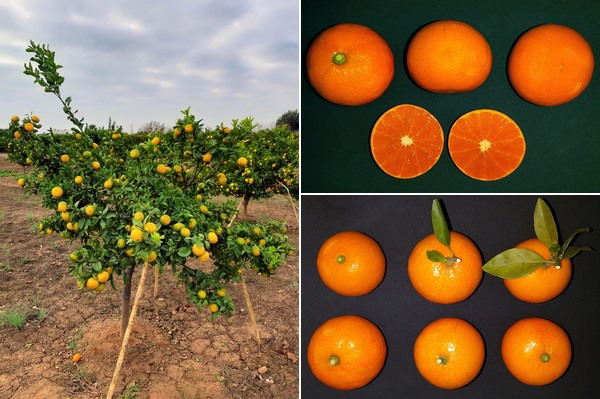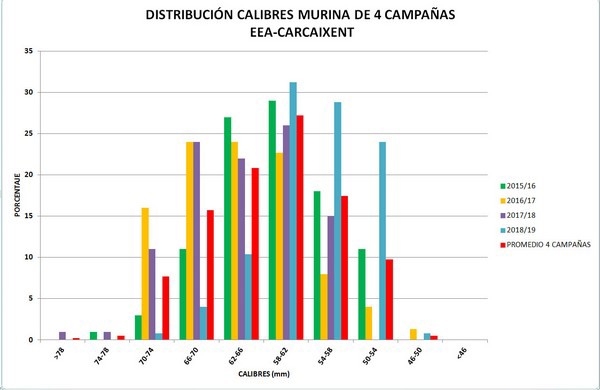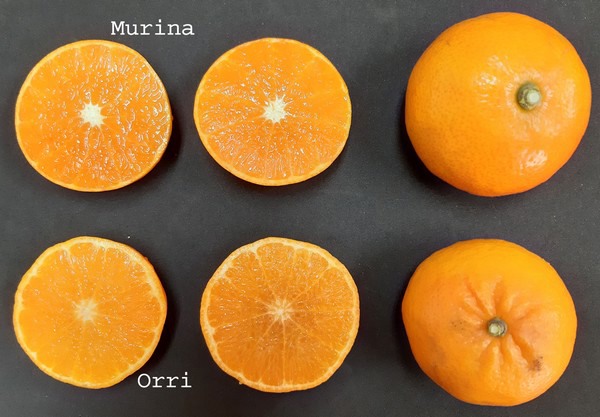Varietal innovation in the mandarin segment has become very important in recent years, in which club varieties have gained a lot of ground in the Spanish citrus sector, not only because of the fruit's organoleptic quality, but also because of the high profitability levels for the producers.

One of the organizations that have been making progress in the development of new mandarin varieties has been the Valencian Institute of Agrarian Research (IVIA), which has developed the Murina mandarin in partnership with AVASA.
"The Murina is a Murcott mutation obtained through bud irradiation," says Vicente Tejedo, head of the Citriculture section of the IVIA Technology Transfer Service. “It has aroused a lot of interest because it is a late variety that can compete perfectly with club varieties. It can be harvested from mid / late February to April; that is, in the same period as other mandarins such as the Leanri or Nadorcott,” he says.

This new variety, 80% from IVIA and 20% from AVASA, is free. It's not subject to high royalties, like club varieties, although the price of its seedlings is around two Euro more expensive than that of the seedlings of free varieties. This is done to cover the costs of both the nursery and the new research projects of both institutions.
An alternative to the Clemenules
The Murina mandarin is called to become a viable alternative for citrus growers in the Region of Valencia, where the Clemenules is mainly grown. “Of the entire group of mandarins, the Clemenules currently accounts for more than 60% of the total, since there is no variety with such an organoleptic level,” says Vicente Tejedo. “It would be interesting for the entire sector, both cooperatives and private exporters, to diversify the supply and not to focus on a single variety. Besides, the Clemenules has a very short marketing period, starting in mid / late October. Whenever there is a large production, as was the case two seasons ago, prices plummet,” he says.

"There are other important factors, such as the patterns used, especially the Carrizo, which is the one currently used, or the rising temperatures as a result of climate change, which are contributing to all this production being concentrated within no longer than two months and a half, causing prices to be affected,” he says. "The Murina variety could very well solve this problem."
Another important characteristic of the variety obtained by the IVIA and AVASA is that it is compatible with the breeding of bees, as it has low pollen viability and does not develop seeds, contrary to what happens with other hybrid club varieties, which even require the use of anti-bee nets to avoid pollination, says Vicente.
"Its organoleptic quality is also excellent. The Murcott is a variety of exceptional quality and flavor, but it contains many seeds and that makes it less marketable. That's why we are all working on hybrids of this mandarin. In fact, the Nadorcott is a Murcott hybrid, just like the Leanri, and the Spring Sunshine is an irradiated Murcott."

Latest varieties developed by the IVIA
In addition to the Murina mandarin, the Valencian Institute of Agrarian Research has two other successful mandarin varieties on the market: the Safor, a triploid hybrid obtained by controlled pollination between the Fortune and the Kara mandarins, and the Neufina, a mutation of the Clemenules obtained through bud irradiation.
"Both are very interesting varieties," says Vicente. “The harvest of the Neufina takes place from January to mid-February, and connects with that of the Murina, which is harvested from late February to April. These two varieties can help a lot in the diversification of the producers' supply at an affordable price, allowing them to compete with the club varieties,” he says.
Great interest from producers
The Murina variety is already being sold by AVASA nurseries. "The Murina was already marketed last year, although the acreage is still very small, with between 60 and 80 hectares. In fact, it still doesn't even appear in the statistical data from the Council of Agriculture,” he says. “However, breeders are seeing a lot of interest in this mandarin. In the medium term, the Murina will be an important variety in the market,” says Tejedo.
